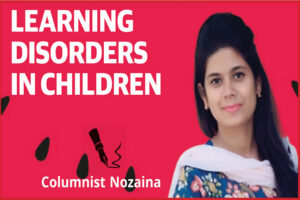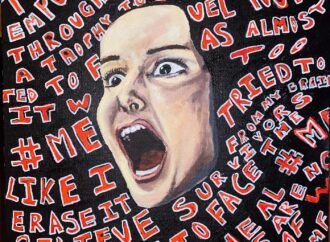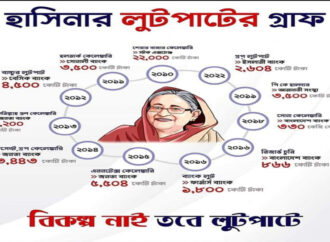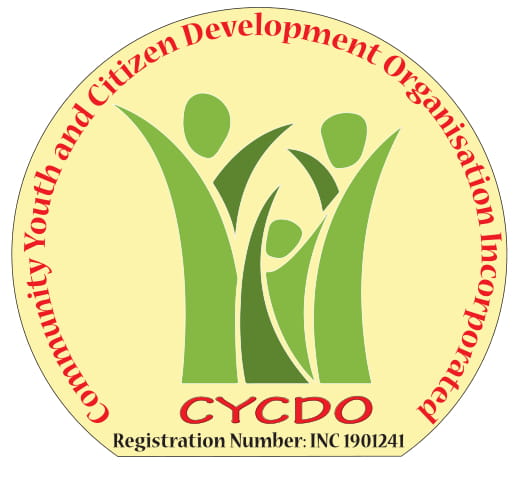Columnist Nozaina: Learning disorders can make it difficult for a child to read, write, or do simple tasks. It’s hard to know that a child has a learning disorder because some children have these disorders for a long time before identification. These children may have a difficult time in school. Children cannot write, or

Columnist Nozaina: Learning disorders can make it difficult for a child to read, write, or do simple tasks. It’s hard to know that a child has a learning disorder because some children have these disorders for a long time before identification. These children may have a difficult time in school. Children cannot write, or read and are unable to solve a simple math question. These learning disorders affect their self-esteem, and their effort to succeed goes down. Parents need to know about the symptoms, because the sooner they identify, the faster they can help their child to combat this problem. A learning disorder refers to the brain taking in and working with information in a different way that is not typical. It keeps children away from learning new skills and using them well. Children with learning disorders have above-average or average intelligence.
TYPES OF LEARNING DISORDER:
Dysgraphia: Children with dysgraphia have difficulties with their handwriting. They might have problems writing down their thoughts, forming letters, and writing within a defined space. Writing requires complex skills that involve the capacity to process information, vision, and movement. It may cause the following.
* Handwriting that is hard to read
* Slow writing that takes a lot of time
* Problem putting thoughts into writing
* Poorly organized written text
* Difficulty with punctuation, spelling, and grammar
* Difficulty recalling how to form letters, draw lines, copy shapes
Dyslexia: Children with this disorder have problems with reading words properly and may have problems identifying the words they already know and understanding sentences. Reading is based on understanding speech. In this disorder, the child may have difficulty understanding a spoken word as a mix of diverse words. It makes it harder to understand how letters make a word and how letters represent a sound. If the children have mastered basic skills. They may have difficulty with following skills.
* Spelling
* Reading at a typical pace
* Understanding what they read
* Recalling correctly what they read
Apraxia of Speech: It’s also called verbal apraxia. Children with this disorder have problems in speaking. They have trouble saying what they want to say.
* Trouble forming certain sounds or words
* Difficulty in saying a sentence that flows smoothly
* Difficulty in properly moving the jaw, tongue, and lips to speak
Nonverbal Learning Disorder: Children with this learning disorder may have strong verbal skills, but have difficulty in understanding body language and facial expression. They are clumsy and have trouble following and generalizing multistep directions.
*Perceiving where objects are
*Understanding abstract concepts
*Organizing, planning, and paying attention
*Understanding higher-level writing and reading tasks
Dyscalculia: A learning disorder in math. Children with this disorder may have difficulty understanding arithmetic concepts, measuring, doing multiplication, and addition.
*Using math symbols
*Learning basic math rules
*Doing math problem
*Understanding word problem
*Difficulty in understanding how numbers work and relate to each other
*Recording and organizing information while solving math problems
Central Auditory Processing Disorder: Children with this disorder have problems remembering and understanding language-related tasks. They are easily distracted and confused by words. They have difficulty understanding jokes, following directions, and explaining things.

SYMPTOMS:
There are the following symptoms of learning disorders.
Clumsiness
Poor memory
Ineffectiveness
Trouble telling time
Trouble focusing
Problem with math
Inappropriate response
Problem in writing or reading
Poor eye-hand coordination
Tendency to reverse letters
Difficulty in sounding out words
Confusion between right and left
Difficulty in following instruction
Impulsiveness and restlessness
Disconnect between words and meanings
Difficulty in grasping certain concepts and words
Inconsistent performance on a weekly or daily basis
Inability to distinguish between numbers, letters, or sounds
Tendency to put the letters and numbers in the wrong sequence
All the children struggle with some of these things during their school years. Children with learning disorders may have a cluster of these symptoms that may persist. They are good in many things and poor in other areas. Learning disorders affect a child’s ability to read, write, socialize, do math, understand and use language, and learn skills that don’t involve words.
Causes: Various things may play roles in learning disorders.
Emotional trauma: This may include emotional abuse or a deeply stressful experience. It may affect brain development and increase the risk of learning disorders in early childhood.
Family history: Genes and family history also increase the possibility of these disorders. Having a blood relation with a learning disability may also increase the risk of a child having this disorder.
Physical Trauma: Nervous system disorders or head injuries may be a cause of these disorders.
Risk Before Birth: These problems are also associated with exposure to drugs or alcohol before birth and poor growth in the uterus. Learning disorders are also linked with being born too early and having low birth weight.
Poisonous Substances: Exposure to high levels of toxic substances (lead) has been associated with a greater risk of learning disorders. The problem can grow that’s why early diagnosis is important.
A child who is not able to add simple numbers in elementary school won’t be able to do algebra in high school. Children who have learning problems also have tiredness, depression, less motivation, low self-esteem, and anxiety about their grades. If a parent suspects their child has a learning problem, they may ask the school to check. You may get a private assessment out of the school. A child health care provider, parent, and teacher can request an evaluation. Firstly, a child will likely have a general physical exam that checks for hearing, vision, or other medical problems that may make learning harder. Frequently, a child may have a series of exams done by a team of professionals such as a social worker, psychologist, occupational therapist, special education teacher, and language, and speech specialist. All of these professionals work together to decide whether the child’s trouble meets the definition of a learning disorder. They also find out what kind of special education services are needed, if a child has the disorder. The decision is based on the teacher’s feedback, the results of the test, a review of how the child does in the school, and input from the guardians.


























Leave a Comment
Your email address will not be published. Required fields are marked with *